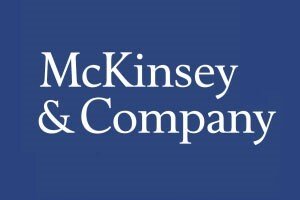K
Kathleen Martin
Guest
The Internet of Things (IoT), the convergence of the digital and physical worlds, has emerged as one of the fundamental trends underlying the digital transformation of business and the economy. From the fitness trackers we wear to the smart thermostats we use in our homes to the fleet-management solutions that tell us when our packages will arrive to the sensors that promote increased energy efficiency or monitor natural disasters resulting from climate change, the IoT is now embedded in the lives of consumers and the operations of enterprises and governments.
Sidebar
Defining the Internet of Things
In 2015, the McKinsey Global Institute published a research report entitled The Internet of Things: Mapping the value beyond the hype. The report analyzed the economic potential that the IoT could unleash through consideration of hundreds of use cases in the physical settings in which they could be deployed.
Six years later, in a new report, The Internet of Things: Catching up to an accelerating opportunity, we have updated the analysis to estimate how much of that value has been captured, how the potential value of the IoT could evolve in the coming decade, and the factors that explain both (see sidebar, “Defining the Internet of Things”). The market has grown considerably in the intervening years but not as fast as we expected in 2015. The IoT has faced headwinds related to change management, cost, talent, and cybersecurity, particularly in enterprises.
Here’s what our latest research found:
Play Video
Video
Research overview
Sidebar
Defining the Internet of Things
In 2015, the McKinsey Global Institute published a research report entitled The Internet of Things: Mapping the value beyond the hype. The report analyzed the economic potential that the IoT could unleash through consideration of hundreds of use cases in the physical settings in which they could be deployed.
Six years later, in a new report, The Internet of Things: Catching up to an accelerating opportunity, we have updated the analysis to estimate how much of that value has been captured, how the potential value of the IoT could evolve in the coming decade, and the factors that explain both (see sidebar, “Defining the Internet of Things”). The market has grown considerably in the intervening years but not as fast as we expected in 2015. The IoT has faced headwinds related to change management, cost, talent, and cybersecurity, particularly in enterprises.
Here’s what our latest research found:
Play Video
Video
Research overview
- The potential economic value that the IoT could unlock is large and growing. By 2030, we estimate that it could enable $5.5 trillion to $12.6 trillion in value globally, including the value captured by consumers and customers of IoT products and services.
- The IoT’s economic-value potential is concentrated in certain settings (types of physical environments where IoT is deployed). We found that the factory setting (which includes standardized production environments in manufacturing, hospitals, and other areas) will account for the largest amount of potential economic value from the IoT, around 26 percent, in 2030. The human-health setting is second, representing around 10 to 14 percent of estimated IoT economic value in 2030.
- B2B applications are where the majority of IoT value can be created, with around 65 percent of the estimated IoT value potential by 2030. But the value of B2C applications is growing quickly, spurred by faster-than-expected adoption of IoT solutions within the home.
- The 2030 IoT economic-value potential of the developed world will account for 55 percent of the global total, decreasing from 61 percent in 2020. China is becoming a global IoT force as not only a manufacturing hub and technology supplier but also an end market for value creation.

